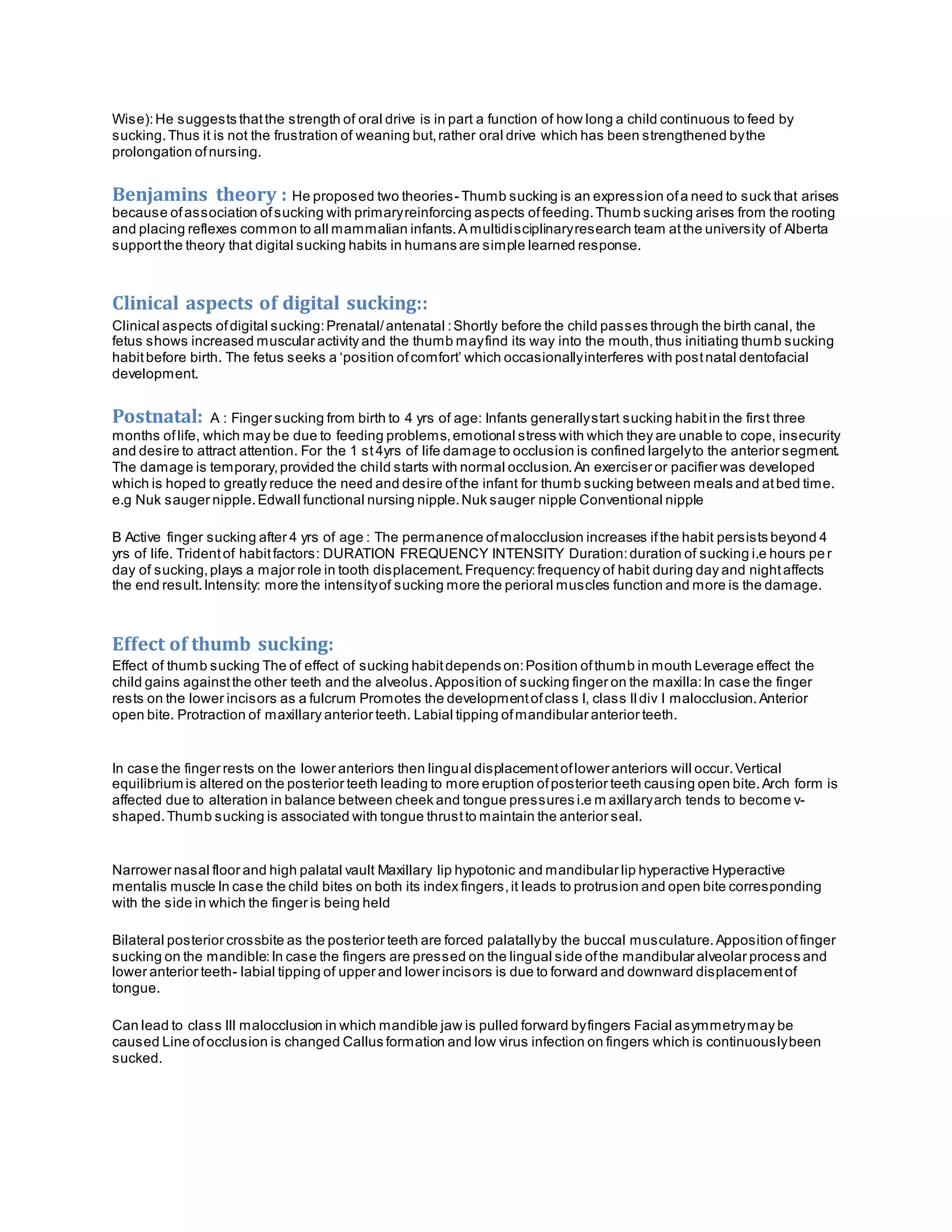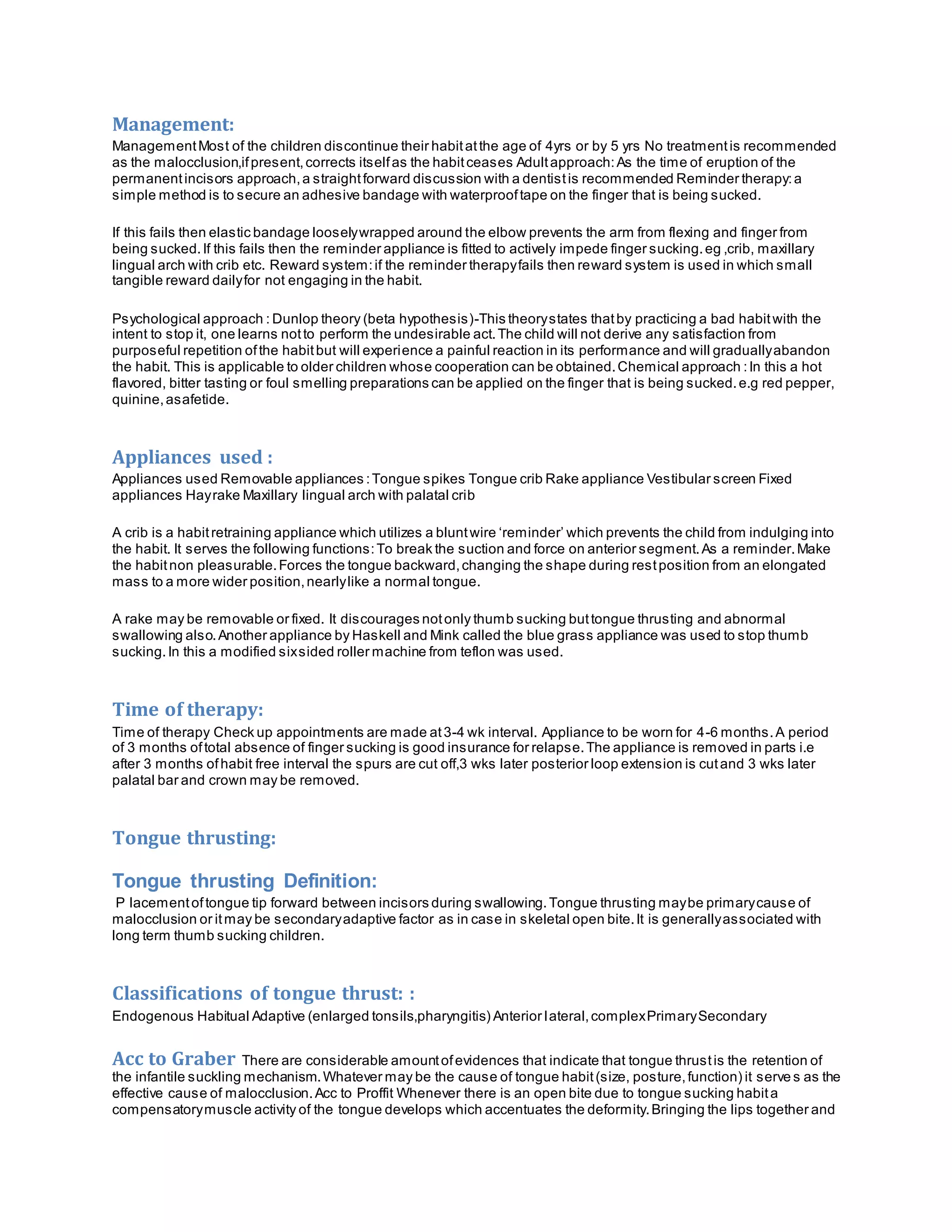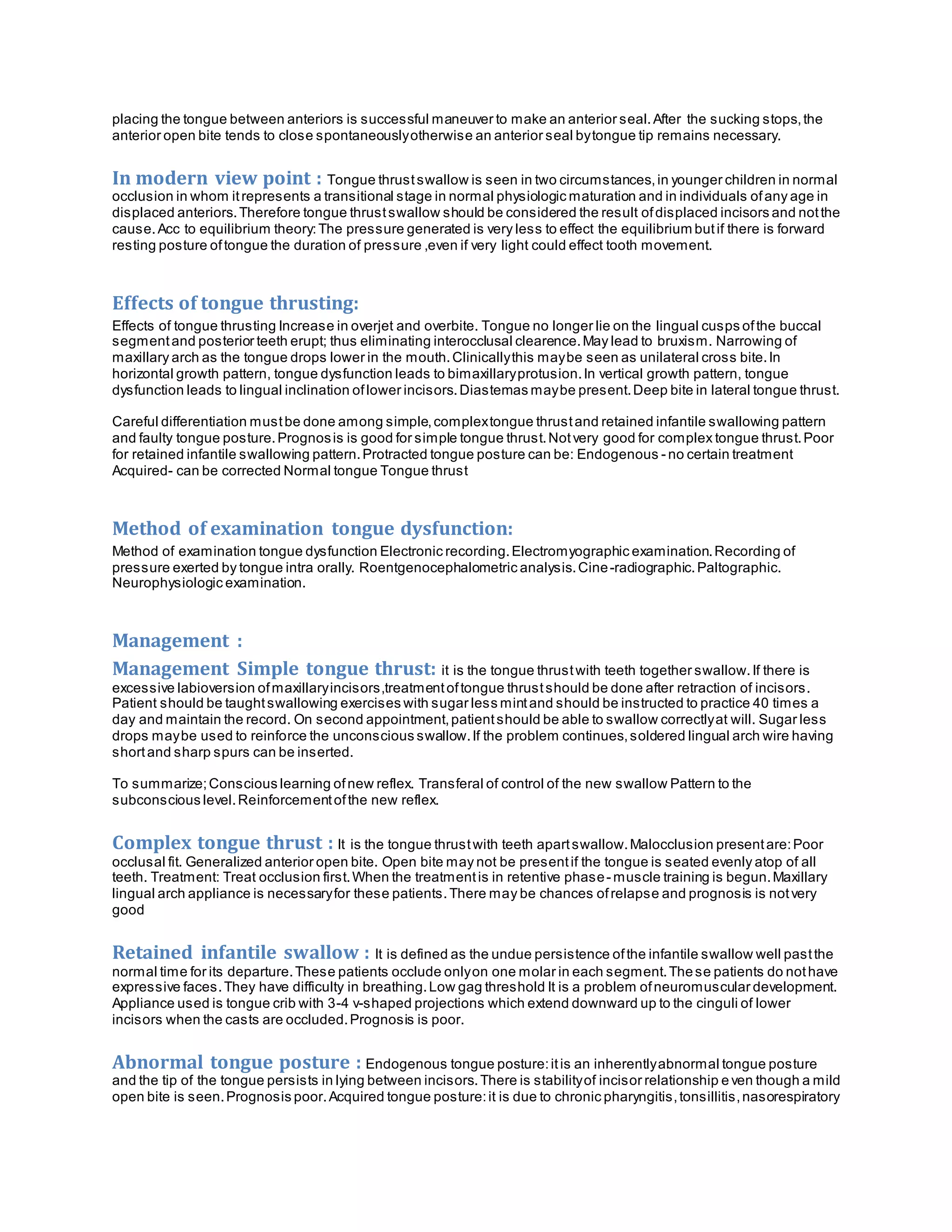William James defined habits as new pathways formed in the brain causing certain stimuli to discharge in particular ways. Habits can be useful, like proper tongue posture, or harmful, like thumb sucking. Thumb sucking can lead to malocclusion if it persists past age 4 by exerting pressure on teeth and arches. Tongue thrusting involves placing the tongue between incisors and can develop as an adaptation to displaced teeth. It may worsen malocclusion over time. Mouth breathing due to nasal obstruction can also affect jaw and tooth development, resulting in narrow arches and open bites. Management of harmful habits involves reminders, appliances, and exercises to encourage new behaviors.






